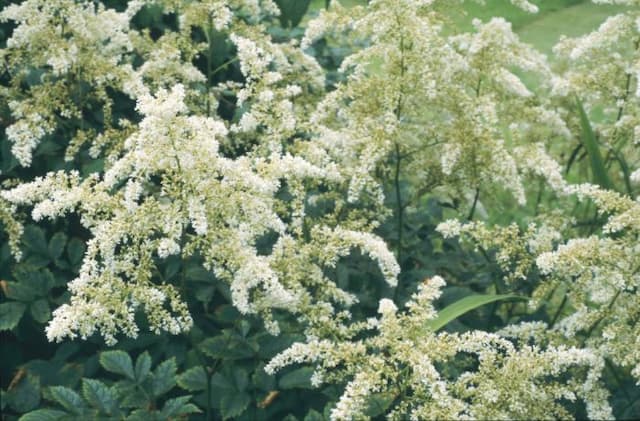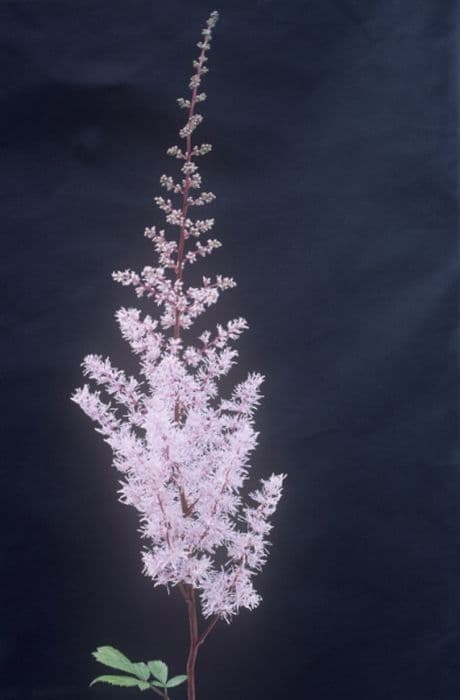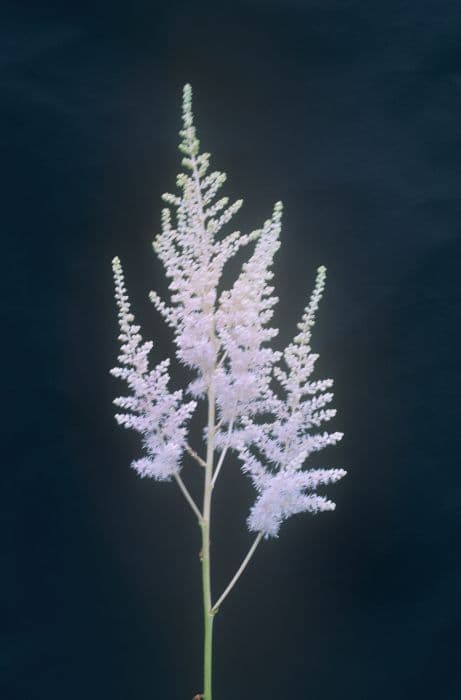Irish Saxifrage Saxifraga 'Coolock Kate' (7)

ABOUT
Saxifraga 'Coolock Kate' is a charming perennial plant, primarily known for its decorative and lush foliage as well as its dainty flowers. The leaves are typically arranged in a rosette formation at the base of the plant, and each leaf displays a rounded shape with a slightly serrated edge. They have a rich, deep green hue, often with pink or reddish tones at the edges or a marbled pattern, creating a striking contrast. When in bloom, 'Coolock Kate' showcases petite flowers that hover gracefully above the foliage on thin, wiry stems. These flowers are star-shaped and encompass a range of colors including white, pink, or red petals, sometimes adorned with delicate spots or streaks that add to their beauty. The flowering stems may bear a cluster of these blossoms, creating a cloud-like effect above the cushion of leaves below. As the seasons change, the plant can take on different aspects. For example, cooler weather may intensify the coloring of the leaves, adding more pronounced red or bronzed tones. The intricate textures and colors of both the foliage and blooms make Saxifraga 'Coolock Kate' a delightful plant for rock gardens, alpine displays, or as an ornamental ground cover, offering visual interest throughout the growing seasons.
About this plant
 Names
NamesFamily
Saxifragaceae.
Synonyms
No common names available.
Common names
Saxifraga 'Coolock Kate'
 Toxicity
ToxicityTo humans
Saxifraga 'Coolock Kate', commonly known as Saxifrage, is generally considered non-toxic to humans. There are no well-documented cases of poisoning from this plant, and it's not known to cause any harmful effects if ingested in small quantities. However, it is always advisable to avoid eating ornamental plants as a general safety precaution. If large quantities are consumed or if an individual has a sensitivity or allergy to this plant, gastrointestinal discomfort or more serious symptoms could potentially occur.
To pets
Saxifrage is not known to be toxic to pets. It is considered safe for dogs, cats, and other domestic animals. There are no widely recognized symptoms of poisoning, as the plant is generally not harmful. If a pet were to ingest a large amount of Saxifrage, it might experience mild stomach upset, but serious consequences are unlikely. As with all plants, monitor your pet's reaction and consult a veterinarian if you notice any signs of distress.
 Characteristics
CharacteristicsLife cycle
Perennials
Foliage type
Evergreen
Color of leaves
Green
Flower color
Pink
Height
0.5 feet (15 cm)
Spread
1 foot (30 cm)
Plant type
Herb
Hardiness zones
5
Native area
Europe
Benefits
 General Benefits
General Benefits- Ornamental Value: Saxifraga 'Coolock Kate' offers aesthetic appeal with its attractive foliage and bright, beautiful blooms that enhance the visual appeal of gardens and outdoor spaces.
- Low Maintenance: It requires relatively minimal care once established, making it suitable for beginner gardeners or those who do not have much time to dedicate to plant care.
- Ground Cover: The dense growth habit of Saxifraga 'Coolock Kate' makes it an excellent ground cover, effectively suppressing weeds and reducing soil erosion.
- Adaptability: It can thrive in a range of conditions, including rocky soils and alpine environments, demonstrating its versatility in different landscape settings.
- Cold Tolerant: The plant is cold hardy and can survive in cooler climates, making it a suitable choice for gardens in temperate zones.
- Pollinator Attraction: The flowers of Saxifraga 'Coolock Kate' can attract pollinators such as bees and butterflies, contributing to the health of the local ecosystem.
- Seasonal Interest: With its spring and summer blooms, Saxifraga 'Coolock Kate' adds color to the garden throughout the growing season.
 Medical Properties
Medical PropertiesThis plant is not used for medical purposes.
 Air-purifying Qualities
Air-purifying QualitiesThis plant is not specifically known for air purifying qualities.
 Other Uses
Other Uses- Photography: Saxifraga 'Coolock Kate' with its delicate flowers can be a beautiful subject for macro and nature photography, providing an interesting texture and color contrast.
- Education: This plant can be used in educational programs at botanical gardens to teach about alpine plants and their adaptations to harsh environments.
- Artistic Inspiration: The unique form and vibrant colors of Saxifraga 'Coolock Kate' can inspire artists to create botanical illustrations or use it as a motif in fabric designs.
- Companion Planting: 'Coolock Kate' can be planted alongside spring bulbs to create a succession of blooms in a rock garden setting.
- Culinary Garnish: Although not commonly consumed, the flowers could be used as an ornamental, non-toxic garnish for special dishes to add color and interest.
- Feng Shui: Some practitioners might use the plant in Feng Shui arrangements to symbolize perseverance and tenacity, attributes conferred by its rock-dwelling nature.
- Memory Gardens: Incorporating Saxifraga 'Coolock Kate' into a memory or bereavement garden as a perennial symbol of everlasting love, due to its long-lasting blooms.
- Moss Gardens: 'Coolock Kate's' moss-like foliage makes it suitable for use in moss and miniature gardens, creating a diversity of textures.
- Desk Plants: Given the right conditions, it could serve as a petite desk plant, offering a touch of nature’s serenity to office environments.
- Ephemeral Jewelry: The tiny flowers might be used in creating ephemeral jewelry or botanical accessories for weddings and other special occasions.
Interesting Facts
 Feng Shui
Feng ShuiThe Saxifrage is not used in Feng Shui practice.
 Zodiac Sign Compitability
Zodiac Sign CompitabilityThe Saxifrage is not used in astrology practice.
 Plant Symbolism
Plant Symbolism- Perseverance: Saxifragas, being rock garden plants, often symbolize tenacity and the ability to thrive in challenging conditions. 'Coolock Kate' would share this symbolism, representing the ability to overcome obstacles and persist through hard times.
- Protection: This plant often grows in rocky crevices, which can symbolize a safe haven or protection from the elements, suggesting resilience and shelter.
- Timelessness: Some species of Saxifraga are known for their longevity and ability to grow for many years, thus 'Coolock Kate' may embody the idea of enduring through the passing of time, unchanging and constant.
 Water
WaterThe Mossy Saxifrage, or Saxifraga x arendsii 'Coolock Kate', should be watered deeply to establish a strong root system, then you can decrease the frequency. Water the plant when the top inch of soil feels dry to the touch, approximately once a week. Use approximately one gallon of water per plant each time you water, aiming to keep the soil evenly moist but not soggy. During the growing season, ensure consistent watering, but in winter, you can reduce watering as the plant's growth slows.
 Light
LightMossy Saxifrage thrives best in partial shade to full sunlight. It should be placed in a spot where it can receive morning sunlight but is protected from the intense heat of the midday sun. Consistent, bright, indirect light will help the plant to flourish without the risk of scorching its leaves.
 Temperature
TemperatureMossy Saxifrage is hardy and can tolerate a range of temperatures but performs best in conditions between 60°F and 75°F. It can survive temperatures down to around 0°F but should be protected from extreme cold. Avoid exposing the plant to temperatures above 80°F, as this can cause stress.
 Pruning
PruningMossy Saxifrage should be pruned to remove any dead or damaged foliage and to encourage a dense, compact growth habit. Pruning is best done in early spring before new growth begins. The frequency of pruning depends on the plant's appearance and health, but generally, an annual trim is sufficient.
 Cleaning
CleaningAs needed
 Soil
SoilMossy Saxifrage prefers a well-draining soil mix with equal parts of loam, peat, and sharp sand, aiming for a slightly acidic to neutral pH of around 5.5 to 7.
 Repotting
RepottingMossy Saxifrage should be repotted every two to three years to refresh the soil and encourage healthy growth.
 Humidity & Misting
Humidity & MistingMossy Saxifrage thrives in moderate humidity levels but can tolerate a range of conditions as long as the soil drainage is good.
 Suitable locations
Suitable locationsIndoor
Place in bright, indirect light with cool temps.
Outdoor
Grow in partial shade with moist, well-draining soil.
Hardiness zone
4-9 USDA
 Life cycle
Life cycleSaxifraga 'Coolock Kate', commonly known as Saxifrage or Rockfoil, begins its life cycle as a seed, which germinates in moist, well-drained soil typically found in alpine or rock garden settings. After germination, it develops into a small rosette of leaves at the soil surface, a vegetative stage where it grows and establishes a root system. This perennial plant then matures and produces flowering stems, with each bearing clusters of small, attractive flowers which can vary from white to pink depending on the cultivar. Once pollinated, often by insects, the flowers develop into capsules containing seeds. As a perennial, Saxifrage 'Coolock Kate' does not die after flowering but enters a period of dormancy, usually during the winter, before re-emerging in the spring to repeat its growth cycle. Over time, the plant can form dense mats as it spreads through short runners, and it may be divided and transplanted to propagate new plants.
 Propogation
PropogationPropogation time
Spring-Early Summer
Saxifraga 'Coolock Kate', also known as Saxifrage, is most commonly propagated through division. This is typically done in the spring as new growth begins to appear. To propagate, carefully lift the parent plant and use a sharp, clean knife or spade to divide the clump into smaller sections, each with at least one growth bud. Replant the divisions at the same depth they were growing at previously in well-draining soil, spacing them about 6 to 8 inches (15 to 20 centimeters) apart. Water the new plants thoroughly after planting to help establish them. Division is a reliable method that helps to maintain the vigor of the parent plant while creating new specimens that are genetically identical to the original.









